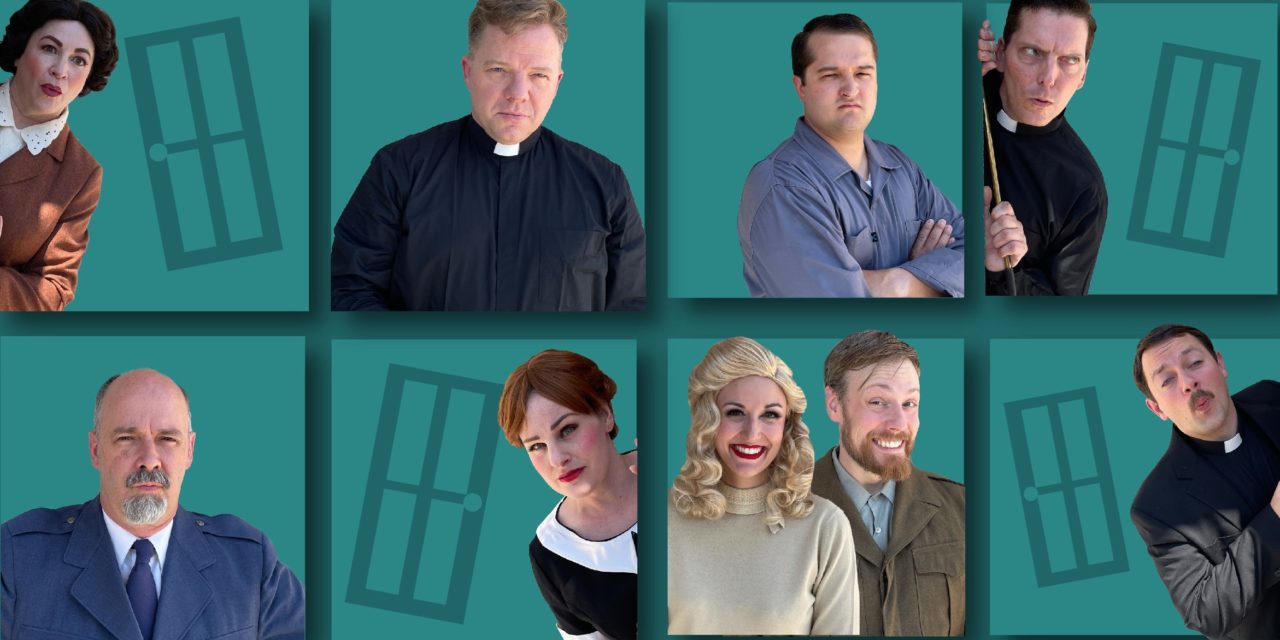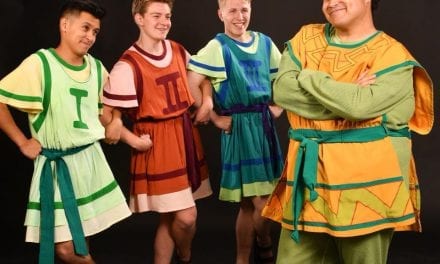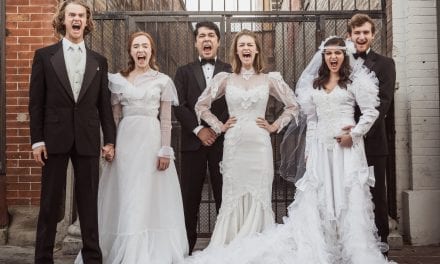WASHINGTON TERRACE — See How They Run is a British farce written by Philip King that has been gracing various stages since 1944. It gets its title from the nursery rhyme, “Three Blind Mice,” and follows the story of a Vicar’s wife who is trying to fit in the small town that they have come to live in with the backdrop of World War II. Being a farce, there is of course confusion, mistaken identities, and hilarity that abounds.

Show closes September 17, 2022.
The Terrace Plaza Playhouse production, directed by Ryan Bruckman, certainly delivered on the laughs. The show starts out simple enough, with a nosy neighbor, Miss Skillon, played by Jennifer Westfall, coming to complain to the local Vicar, played by Josh Curtis, about his new wife, played by Amelia Bowles. They of course have interactions with the maid, Ida, played by Kellie Chapman, which is how the story is introduced.
One of the first things that I noticed about this production was the top notch set, constructed by Nate Fawcett. The show is set in 1940s England, and I felt like I was sitting right in front of a 1940s living room. This ambiance was increased by the costume design by Stephanie Bruckman. It is true that about half of the gentlemen in the show spend the evening in a Vicar’s outfit, but Bruckman makes up for it with the fun costumes for the female players, the great time period hats, and most important the shoes. I have found that in many shows the shoes seem to get left off the importance list, and am so proud of this production for making sure both the men and the women have period-appropriate footwear on.
As for the performances, one of the main standouts was Westfall as the nosy neighbor Skillon. What starts out as a snooty, holier than thou performance soon transforms into one of the best physical comedic displays I have seen in months. Westfall has moments where she is literally being dragged across the stage, moments where she is inebriated and becoming quite the opposite of the person she was in the beginning of the show, and other moments where her physical moments and prowess seemed to just defy description.
Additionally, I enjoyed the facial expressions by Curtis as the Vicar. Curtis spends much of the show being surprised and confused. I do not like giving away much of the story in a farce because part of the fun is the confusion and surprise of the story; however, Curtis did a fine job of indicating his level of bewilderment at many different parts of the show. At one point of the second act when most of the players were spending the scene chasing one another, Curtis came onto the stage with a different and delightfully amusing facial expression each time.
Bowles as the innocent yet slightly devious Vicar’s wife was matched quite well with Andrew Heyward, who plays Clive Winton, an old friend of Bowles who shows up at an inopportune time, and the two decide to go out and have some fun, causing more hilarity, confusion, and scandal.
Duane Beesley rounds out the troupe as the Bishop of Lax quite nicely. Being the cast member who spends most of the evening in complete confusion, Beesely plays that confusion so well. I found his confusion balanced nicely with Chapman as Ida, who spent most of the evening trying to warn others of what was going on but finding that no one would actually listen to her.
One of the most important things that a cast needs when trying to pull off a farce is timing. Without correct timing and pacing, a farce can be dry and dull. This cast had excellent timing, and when the intermission had been reached, I was actually shocked that we had gotten this far into the production already. The whole evening seemed to fly by, and at the lovely final scene that serves as a small recap in an amusing way, I found myself smiling and thinking that this is a show and a cast that I would come and see again.





